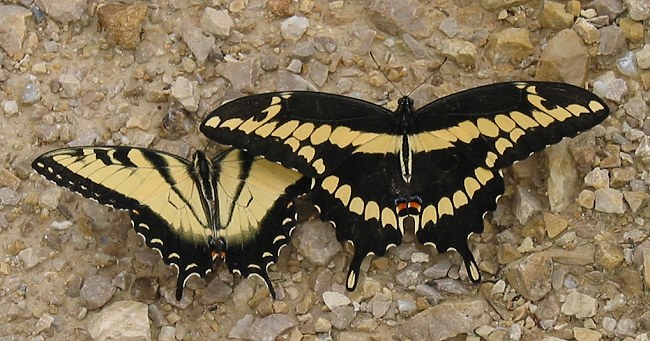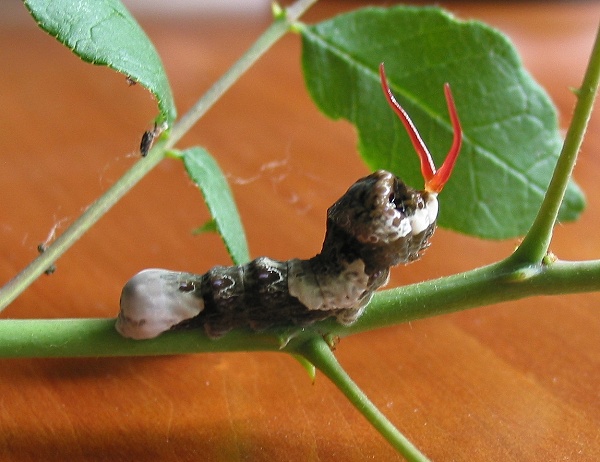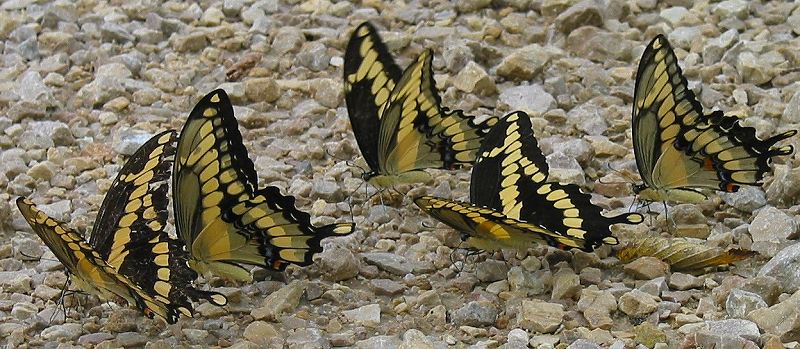Giant Swallowtails are the largest butterflies we have on our property. Their wingspans can be up to 6 inches – really breathtaking the first time you see one. We see them mostly in the wetland and the prairie, and sometimes sailing along wide trails through the woods.

Like Eastern Black Swallowtails, these butterflies often hover while they’re nectaring so their forewings are constantly moving.

The only time I’ve seen them hold very still is when they’re on a rocky or sandy surface, like a driveway, soaking up sun or salt. Here’s a photo that shows how much bigger they are than the more common Tiger Swallowtails.

Giant Swallowtail caterpillars eat plants in the citrus family. In the southern states they’re called “Orange Dogs” and are considered pests on citrus trees, but in this area they eat Prickly Ash. I usually watch them carefully when I see them in the woods, because I suspect most of those butterflies are females looking for places to lay eggs. I watched one lay an egg a few years ago. I took the egg home, and was able to raise the caterpillar and release the butterfly.
This is the caterpillar in one of its early instars.

And here it is a few weeks later. The two red tentacles on its head are called an osmeterium. They come out and wave around if the caterpillar is startled or handled.

In August of 2002 we saw more Giant Swallowtails than I had ever seen before at the farm. They were puddling on the driveway, nectaring at the flowers, and flying though the air everywhere. Here’a a group of them on the driveway.

Giant Swallowtails probably don’t overwinter as far north as Wisconsin. They always appear later in the summer, so I suspect they repopulate the area from the south each year. We are right at the northern edge of their range.
